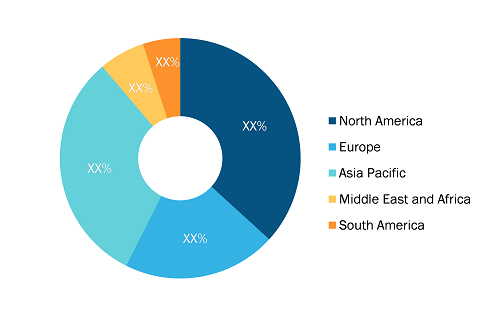Growing Need for Overall Operational Cost Reduction, Delivery Management, and Better Operational Efficiency is Boosting the Third party logistics Market Growth
According to our latest market study on "Third party logistics Market Forecast to 2030 – Global Analysis – by Components, Aircraft Type, End Users," the market is expected to grow from US$ 1273.11 billion in 2022 to US$ 1929.1 billion by 2030; it is anticipated to register a CAGR of 5.33 % from 2022 to 2030.
Over the last decade, the progress of hardware and the Internet has been directly linked with the adoption of e-commerce. E-commerce has replaced mortar and brick retail in almost all aspects, becoming the preferred medium for marketing, promoting, and purchasing products, goods, and services. As a result, many popular retail stores and brands have launched online shopping platforms. As a result, the volume of overall shipments has increased, ultimately creating demand for shipping services. In the 13 markets evaluated, almost 159 billion packages were transported in 2021, compared to 131 billion packages in 2020, representing a 21% increase. Thus, increased penetration of e-commerce has directly affected the third party logistics market positively in the last few years.
Third party logistics Market Share — by Region, 2022
Third Party Logistics Market Size and Forecast (2020 - 2030), Global and Regional Share, Trend, and Growth Opportunity Analysis Report Coverage: By Mode of transports (Roadways, Railways, Waterways and Airways); Services (International Transportation, Warehousing, Domestic Transportation, Inventory Management, and Others); End User (Automotive, Healthcare, Retail, Consumer Goods, and Others) and Geography
Third Party Logistics Market Trends and Top Players by 2030
Download Free Sample
Source: The Insight Partners Analysis
Many large and medium-sized organizations are taking initiatives to optimize their business processes to reduce carbon footprints. The transportation and logistics sector is among the major contributors to carbon emissions, accounting for approximately 27% of the total emissions. Many third-party logistics firms are helping shippers improve mobility by planning more effective routes, using environmentally friendly modes of transportation, and occupying key places. Third-party logistics providers such as Borderline help reduce carbon emissions during the transportation stage of distribution by raising the fill rate per transport unit per tank of fuel, using higher-capacity vehicles, and performing routine maintenance of transport vehicles. While historically, the engineering of packing technologies has prioritized economic effectiveness and secure shipping over sustainability, many third-party logistics providers are rapidly moving to eco-friendly packaging to reduce their environmental impact. As recycled waste is used in the creation of eco-friendly packaging, fewer harmful resources are used, which lower overall carbon emissions. Initiatives like these that focus on reducing carbon footprints are aligning with organizations' business strategy, ultimately driving the third-party logistics industry. In addition, governments of developed nations are compelling organizations to adopt greener practices. As a result, many manufacturing companies are searching for third-party logistics providers that have introduced eco-friendly efforts in light of this trend. Some of the practices involve minimizing waste production, lowering the carbon footprint of transportation, and adopting recyclable or environmentally friendly packaging.
The US is one of the notable markets globally and the largest market in North America. Third-party logistics is a key component of the country's supply chain owing to its vast network and diverse nature. The presence of market leaders in electronics, chemical, automotive, and pharmaceutical sectors led to increased demand for logistic services in the country. Further, the emergence of e-commerce companies such as Amazon, Walmart, and eBay and their innovative delivery initiatives have amplified the importance of 3PL services. In recent years, 3PL activities have significantly increased in North Dakota,US. The agriculture sector in North Dakota, which makes up a notable share of the state's economy, is greatly dependent on 3PL services. The service providers have streamlined the agriculture supply chain in the area and enabled efficient transportation and distribution of goods in domestic and international markets.
Germany is the largest market in Europe in terms of third party logistics services. The presence of major logistic service providers, such as DHL Deutsche Bahn, in the country is one of the factors driving the market. Moreover, the country is located at the center of Europe, which makes it the center of the logistics industry. Germany has a strong hold on automotive, engineering, chemical, and electrical sectors. The country is ranked third among the top exporters in the world, accounting for the nation's half economic output. Thus, owing to the factors mentioned above, the annual revenue generated in the 3PL market is higher in the country.
Deutsche Post DHL Group, Kuehne + Nagel International AG, Nippon Express Co., Ltd., DB Schenker, and C.H. Robinson are among the key third party logistics market players profiled during this study. In addition, several other important third party logistics market players have been studied and analyzed during the study to get a holistic view of the third party logistics market and its ecosystem.
Contact Us
Phone: +1-646-491-9876
Email Id: sales@theinsightpartners.com